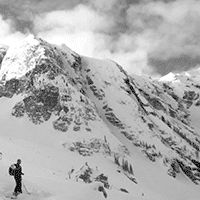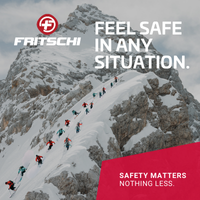Top mistakes made by climbers (And How To Avoid Them)
Climbing is full of risk and there are plenty of opportunities to make mistakes. Have a read over the follow 16 common mistakes for a good refresher before you head out for your next climb:

1. Not double-checking your belay and knots
If you’re belaying, make sure the rope is threaded correctly through the belay device and that the locking carabiners in the system are actually locked. If you’re the climber, double-check your knot. Is it tied correctly? Is it tightened? Threaded through the harness correctly? Is the tail long enough? Check your partner’s knot, too.
REAL LIFE: One famous double-check mistake was Lynn Hill’s accident in Buoux, France, in 1989. When Hill—already a 5.13 climber at the time—weighted the rope at the top of a warm-up climb, her unfinished knot zipped through her harness. She fell 75 feet to the ground but survived. Hill says she got distracted by a conversation and forgot to finish the knot; a bulky pullover hid the error.
2. Not wearing a helmet
Trad climbers wear helmets much more often than sport climbers, but why? You can deck, slam the wall, or flip upside down in sport climbing, and loose rock is always a hazard. Evaluate all the risks before you make a fashion-based decision not to protect your head.
3. More confidence than competence
Push yourself to become a better climber, but understand the risks and assess your ability to mitigate them. The American Alpine Club rates “exceeding abilities” as one of the top causes of accidents.
4. Careless belaying
There are many ways to screw up when belaying. In multi-pitch climbing, slack in your tie-in or an unreliable redirect piece can result in dangerous shock loads. When belaying on the ground, taking your brake hand off the rope (even with an assisted braking device) can quickly lead to a dangerous fall. Another common mistake is standing too far away from the cliff when lead belaying— it’s easy to get dragged across the ground when the climber falls. A big loop of slack lying in the dirt is the lazy, incorrect way to give a “soft catch” belay. Finally, save the crag chat until your climber is safely back on the ground.
5. Failing to knot the end of the rope
You can endlessly debate how to equalize a three-piece anchor, but it’s more common to get seriously hurt being lowered on a sport climb than having an anchor fail on a trad route. If you’re belaying a single-pitch route, tie a knot in the end of the rope, tie it to the rope bag, or tie it yourself. Do it out of habit, not just when you think the rope might not reach. Knotting the end of the ropes is equally important when rappelling. Slipping off the ends of rappel ropes is tragically common, even among very experienced climbers.
REAL LIFE: In 2007, Lara Kellog, an experienced mountaineer, rappelled off the end of her rope while retreating from the Northeast Buttress of Mt. Wake in Alaska’s Ruth Gorge. She was killed after falling about 1,000 feet.
SPORT CLIMBING MISTAKES
6. Rope behind your leg while leading
Anytime you traverse, go out an overhang, or do a step-through move, you’re in danger of putting your leg on the “uphill” side of your rope. If you fall in this position, you’ll likely be flipped upside down. Serious head injuries can result. Develop a “Spidey sense” about when a leg has moved across the line, and fix the problem immediately, even if you have to ruin your red point attempt to do so.
7. Poor communication
Maybe it’s windy, or the route is long, or you’re trying to climb at the Virgin River Gorge, where the interstate noise numbs your eardrums. Regardless, agree with your partner before you leave the ground about your plan when you get to the anchors. Are you threading the rope through the anchor? Lowering off draws? Planning to rappel? A miscommunication can be disastrous.
REAL LIFE: Earlier this year, Phil Powers, executive director of the American Alpine Club and a skilled, veteran climber, fell from the top of a sport climb near Denver, where communication was likely hampered by the roar of the river and the traffic on nearby Highway 6. Powers was seriously injured but is making an amazing recovery.
8. Carabiner over an edge
When you clip a draw to a bolt, check to see where the rope-end biner ends up. If it’s hanging over an edge, the biner could break in a fall. Use a slightly longer or shorter draw.
9. Back-clipping
When clipping the rope into a quickdraw, make sure your end, aka the “sharp end,” comes out of the carabiner away from the wall. If the sharp end leads out of the carabiner toward the rock, you are “back clipped.” There’s a higher chance that the rope could unclip itself from a carabiner during a fall.
10. Z-clipping
There’s nothing like a closely bolted sport climb to make you feel safe—and to increase the probability of pulling up rope from below the previous clip and “z-clipping,” a recipe for impossible-to-move rope drag. Make sure you pull up slack from above your last draw, even if you have to do a series of short pulls. Bite the rope between pulls to hold onto the slack you gain, but be careful: People have lost teeth while clipping!
11. Using fixed quick draws with deeply grooved carabiners
Those perma-draws in the Cave of Pump sure are nice. But look before you clip. Rope-end carabiners on fixed draws can become deeply grooved over time. Many grooved carabiners will hold a significant fall without breaking, but the sharp edges of the groove can slice a rope or remove its sheath, ruining the cord.
12. Blindly trusting bolts
It’s possible for bolts to fail. It’s very possible for old bolts to fail. Be wary of any rusted or corroded bolts, especially at seaside crags; saltwater breezes are very caustic to climbing hardware. A 2009 report by the UIAA showed that 10 to 20 percent of bolts in tropical marine climbing destinations would fail if a fall generated a force of 1,125 pounds. (A “hard” lead fall may generate 2,600 pounds of force.) Similarly, some old-school bolts from the 1980s or earlier will still hold falls, but many won’t. Finally, give a second look to homemade hangers, which can develop hairline fractures where they bend. When in doubt, find a safe way to escape and choose a route with better hardware.
13. Standing in the drop zone
Rocks frequently fall from the tops of cliffs, especially during spring runoff or rain showers. Find sheltered belay spots if possible, and locate your hangout areas well away from vertical or slabby cliffs, or close underneath overhangs.
14. Top roping through fixed anchors
The sand and dirt in ropes can wear through metal, and repeated top roping or lowering through the rings or chains on a sport climb ruins the hardware. Always top rope through your own quick draws, and lower through the fixed hardware only once, when you’re done with the route. Even better, rappel instead of lowering unless the route is too overhanging or wandering to safely clean it while rappelling. Never assume, however, that your partner will rappel instead of lower (see No. 7). This mistake causes many serious accidents!
15. Spraying beta
It’s awesome that you sent that climb using the tiny foot chip with your left foot and gastoning the side pull with your right hand. But keep it to yourself. While no one has ever died after being sprayed down with beta (that we know of), your big mouth could blow someone’s on sight attempt or just ruin the peace and quiet some climbers prefer.
16. Letting your dog run free
Your dog deserves to enjoy the great outdoors with you—emphasis on with you. Dogs running free, trampling ropes, and begging for food negatively impact many climbers’ experience. Please control your beast.
DO: Focus on the task at hand until it’s done. Once you start putting on your harness, finish putting it on, doubled back. If someone starts talking to you after you begin tying your knot, finish the knot before conversing. Completion before distraction!








